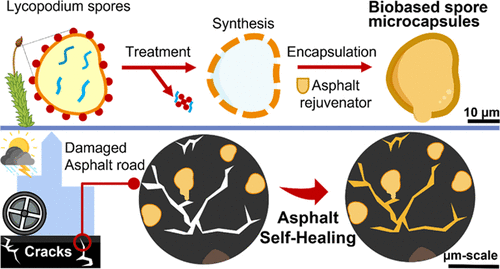A self-healing asphalt that can repair potholes on the road by itself. It sounds like one of those clickbait titles that you see more and more often on social networks because they use far-fetched concepts or improbable facts to get users’ attention. I had a similar feeling when I read that someone had invented an effective solution to road problems that was easy to spread and cheap, too. At least where I live, this is a priority because there are few normal roads that are free of holes and dips. But no, it’s not made-up news; it’s all true because, behind it, there’s a project that came about thanks to the collaboration of various universities in different countries, and also artificial intelligence that was used to develop a new type of asphalt.
Quick repairs, lower costs and more sustainable roads
At the centre of it all is bitumen, a black and sticky substance rich in resins and hydrocarbons, which is derived from the processing of crude oil. So it’s not exactly the best for the environment and air quality because when it is used, it releases significant amounts of carbon, like the amount of carbon dioxide released by the lorries that take the workers to the site where they temporarily fill in potholes and other problems that disrupt the road surface.
Self-healing asphalt
Well, the bitumen developed by researchers at King’s College London and the University of Swansea, together with Chilean scientists, is able to repair cracks in less than an hour, eliminating the need for road maintenance. For this reason alone, we have a solution that is as useful as it is advantageous for the roads, for the owners of cars and other means of transport that use them, as well as for city budgets. But how does this magic material work? To explain the process, scientists say it is inspired by nature, replicating the self-healing abilities of trees. And it is the basis on which the team of scientists aims to create more resistant and sustainable roads.
The role of Google Cloud and AI
The laboratory experiments were prompted by the UK’s need to find effective remedies to reduce the tens of millions of pounds that local authorities have to spend every year on road repairs. Hence the idea of developing a new material, with research supported by machine learning and Google Cloud AI, starting from biomass waste. Although not all the causes of cracks in roads are known, most of the problems stem from the hardening of bitumen caused by oxidation. Using microcapsules of natural, waste-based regenerating spores, scientists in the laboratory have found potentially ideal solutions to stem the problem of potholes within 50 minutes.



Using machine learning, the organic molecules present in the bitumen were analysed. This led to the creation of a data-based model to accelerate atomistic simulations, thus advancing research on bitumen oxidation and crack formation. This step speeds up the process and reduces costs compared to the computational models currently in use. The identification of the chemical properties of the material has allowed researchers to create virtual molecules designed for specific objectives, following a process similar to what happens when new drugs are discovered.
One thing is certain: for now, we have to use the conditional tense because we are still in the development phase, and it’s not certain that everything will go as scientists expect. However, there’s no doubt that self-healing asphalt opens the way to different solutions that are capable of solving the problem. Thanks to AI, it predicts what is best to do and what to avoid in order to make the road surface more durable. This is also because a solution like this allows for the development of innovations with economic and ecological benefits in line with the zero emissions that many countries have been pursuing for several years.



